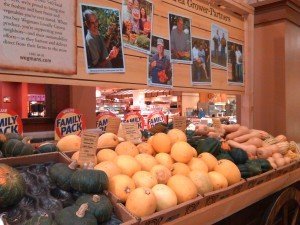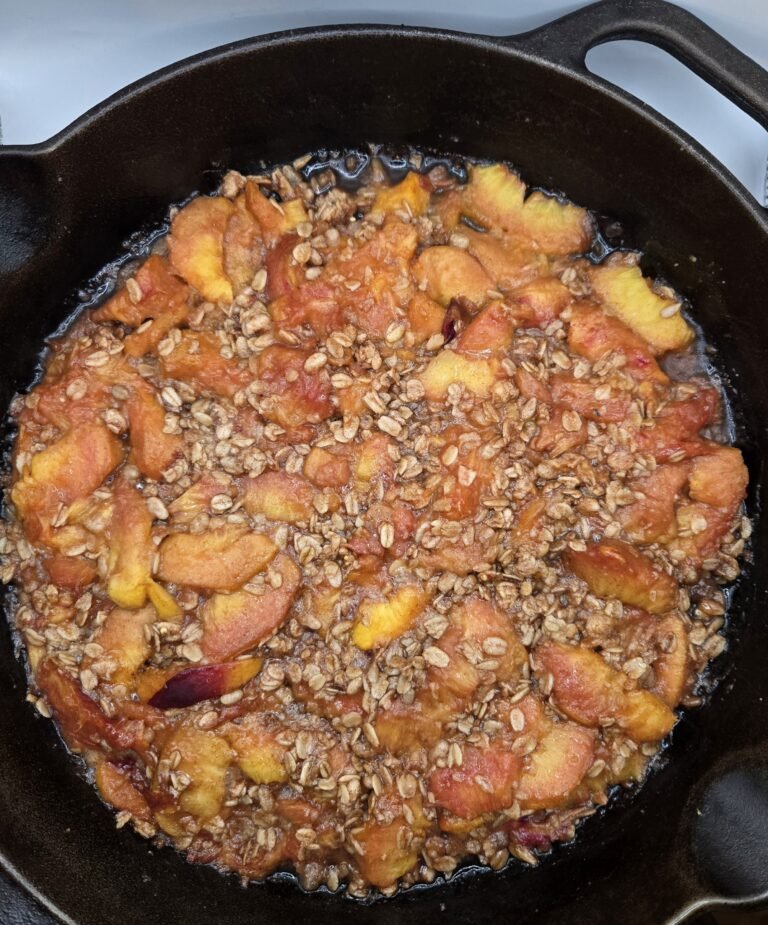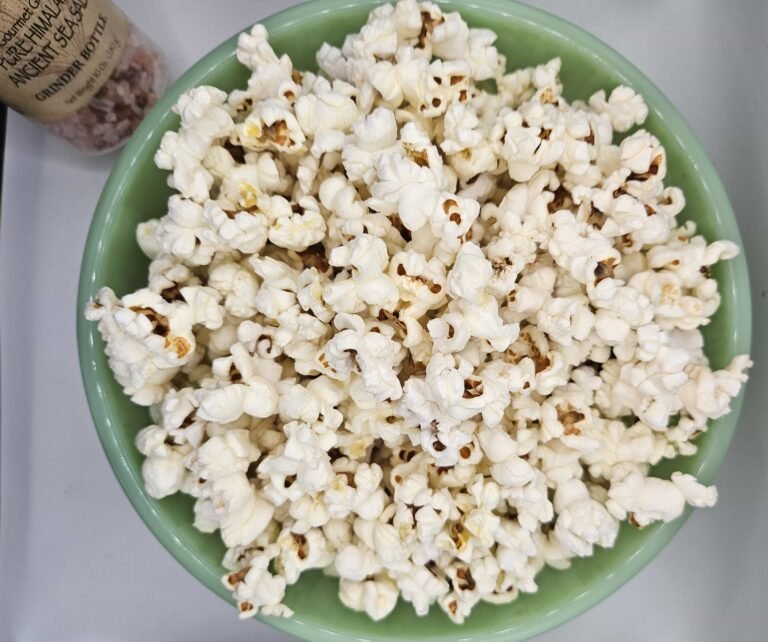
I noticed at My Organic Market (MOMs) recently, it was difficult to find anything local. They had expensive grass-fed ground beef but the origin was Uruguay (and doesn’t have to pass USDA inspection). I asked an employee and she said they had local honey, goat cheese, and eggs. We got the goat cheese but didn’t need eggs or honey. The vine tomatoes were from Israel, the ginger from Peru, the Kiwi from Italy. The potatoes and onions were from somewhere in the USA but not local, which is too bad because they store well from fall.
Food miles (how far food travels) are not only caused by people wanting produce out of season. I read an article on sustainable agriculture about a sugar museum on the Hawaiian island of Maui that’s next door to a sugar processing plant, and surrounded by acres of sugarcane. The sugarcane growing there is processed in the plant across the street, but only to the ‘raw sugar’ stage. It is then shipped to a sugar refinery near San Francisco where it is refined into white sugar. The sugar is then shipped cross-country to New York, where it is packaged in individual paper packages to go on tabletops, which are then distributed all across the country, including Hawaii. So if you drive a mile away from that sugarcane field and sit in a café, the sugar packets on your table have traveled about 10, 000 miles.
A study analyzing food and its travel showed that common produce items such as grapes, cauliflower, peas, broccoli, spinach, and lettuce travel an average of more than 2,000 miles before reaching Midwestern markets.[1] Apples in Des Moines supermarkets come from China, even though there are apple orchards in Iowa. Potatoes in Lima’s supermarkets come from the United States, even though Peru has more varieties of potatoes than any other country.[2] How far food travels plays a major role petroleum consumption and carbon dioxide emissions. Lettuce, grown in the Salinas Valley of California and shipped 3,000 miles to Washington D.C., requires about 36 times as much fossil fuel energy in transport as it provides in food energy when it arrives.
One time I heard a doctor (Jennifer Wilkins) interviewed on the radio commenting that a major supermarket will make a change in what they offer with as few as three requests from customers. When I went to the produce section of our nearest grocery store I asked a guy working there, “Do you know if there is any local produce here?” He looked at me blankly so I added, “From local farmers, because I don’t want to buy produce shipped here from the other side of the country or the world; I just want to buy local produce.” He said no so I said, “When you get a chance, would you please tell the manager that customers would like to see more local produce?” I figure I better ask someone else next time, or ask for the manager in case no one passes on the message.
I’m sure this approach works better for stuff coming off a conveyor belt then produce. At least if I asked for organic sunflower seed butter, they can probably get it from one of their current suppliers. But getting local produce means paying prices that can sustain a small farmer, and working with an operation that can produce a steady supply.
Back in 2010, Wal-Mart pledged to double its local produce sales from 4 to 9 percent by 2015. While they met that goal, there’s little evidence of a widespread benefit to small farmers. Farms have costs associated with becoming an approved Wal-Mart supplier, like passing strict food safety inspections, labeling, and meeting refrigeration and packing requirements.[3] They have to be a very high-producing farm to keep a steady supply of produce off season.
Remember, if you’re buying local food at a massive super-store, like Wal-Mart, that local food still has to go through a distribution center that may be hundreds of miles away for inventory and inspection, before it ships back to the store. Here we have a market called Wegman’s that is based in New York and has stores in six Mid-Atlantic states. It’s a small enough chain that they can offer local produce delivered to the store directly from the farms just during the seasons that work for those farms. While a certain amount of food trade is beneficial, implementing ways to meet local needs before exporting food and not importing foods that are available at home is a key to sustainable agriculture.
[1] “Food, Fuel, and Freeways: An Iowa Perspective on How Far Food Travels, Fuel Usage, and Greenhouse Gas Emissions,” Rich Pirol and Tim Van Pelt, report for Leopold Center for Sustainable Agriculture, Iowa State University, April 19, 2002.
[2] “Eat Here: Reclaiming Homegrown Pleasures in a Global Supermarket,” Brian Halweil, W.W. Norton and Company, 2004.
[3] “Can small farms benefit from Wal-Mart’s push into local foods?” Harvest Public Media, Jan. 13, 2013.




